
Domestic waterway transportation in Northern Vietnam – The inevitable tendency
16/07/2021
ICD TC-QV promises to be the gathering place for the containers (both laden and empty), the customs clearance point for import and export cargoes, serving local enterprises, especially since those in Bac Ninh, Bac Giang, and Thai Nguyen who have the same customs department..
According to the Vietnam Logistics Association’s (VLA) survey, about 99% of containers (both laden and empty) are trucked between ports in Hai Phong, Lach Huyen and factories/warehouses in Northern Vietnam, especially those in Bac Ninh, Bac Giang, Ha Noi, Vinh Phuc…
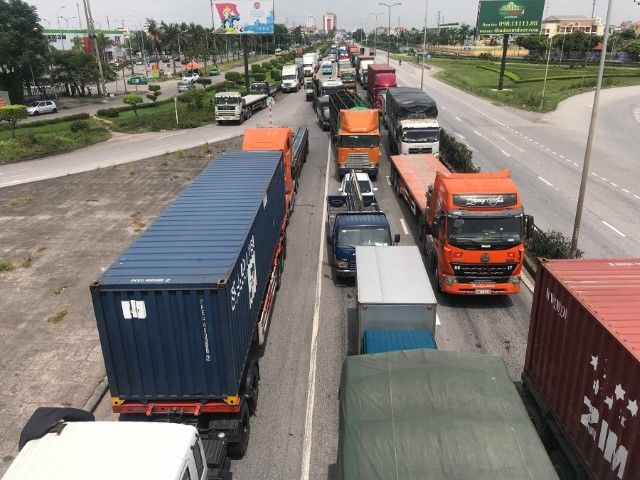
Traffic jam on National Road No.5 – Source: internet
Meanwhile, despite the bad influence of the Covid-19 pandemic globally and domestically, the import-export growth of Vietnam is still high, with a 5,4% increase in 2020 compared to those of 2019; in the first half of 2021, according to the General Department of Vietnam Customs, import and export volume increased 32,2% year-on-year. This has put pressure on the road system in Northern Vietnam, which consists of 3 main routes: National Road No.5, No.5B, and No.18 connecting the key industrial zones to Hai Phong ports which has caused the overload, constant traffic congestions as well as accidents. As a consequence of the mentioned reasons, the logistics costs have been increased, pollution has become more and more serious.
Especially in recent times, when the Covid-19 outbreak happened in Hai Duong (3rd wave) and Bac Ninh, Bac Giang (4th wave), local authorities have been tightening traffic control and people moving in and out of their localities, causing trucking capacity shortage, import and export cargo congestion, and disrupting the supply chain.
The solution of the domestic waterway

Waterway route connecting Bac Ninh – Hai Phong
The Ministry of Transport assigned Vietnam Inland Waterway Administration (VIWA) to research the solution and mechanism to boost the waterway transport connecting the key economic zones and Hai Phong ports. VIWA has actively promoted conferences, survey trips with port operators and container barging service providers. The result is to push the deployment of the inland waterway from Hai Phong ports going through the Cam river – Kinh Thay river – Duong river.
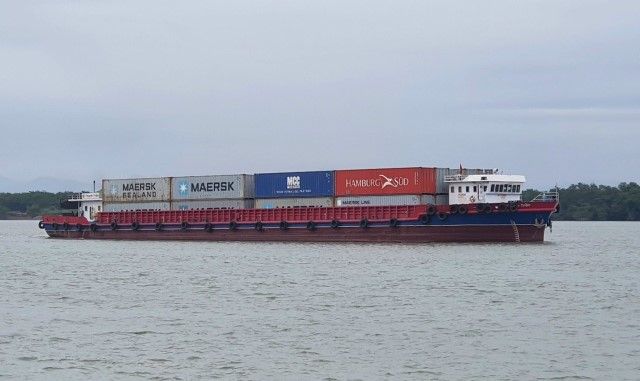
Barge going from Bac Ninh to Tan Cang – HICT via Cam River
Currently, Bac Ky company operates the 2,000-DWT barge (~120 teus) connecting to Tri Phuong port (Tien Du, Bac Ninh). Tan Cang Waterway Transport JSC (a subsidiary of Saigon Newport Corporation) operates 1,500-DWT (~72 teus) connecting to Tan Cang – Que Vo ICD (Que Vo, Bac Ninh) và Dabaco Tan Chi port (Tien Du, Bac Ninh). Survey of Tan Cang – Que Vo ICD (SNP) concludes that the waterway route from Tan Cang – Que Vo ICD to Hai Phong can handle up-to-3,000-DWT barges (160 teus) all year round regardless of seasonal hydrological conditions.
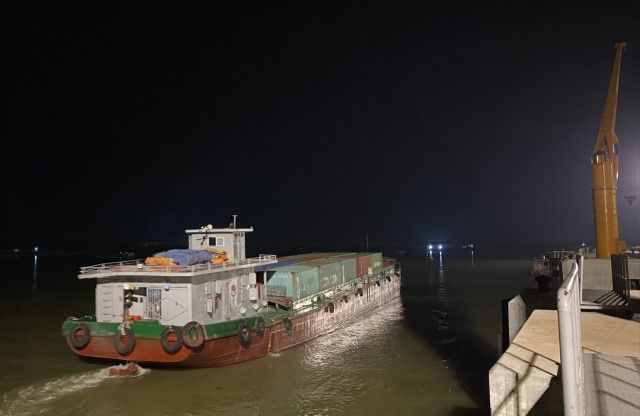
Barge namely Tan Cang 18 is going to berth at Tan Cang – Que Vo ICD via Duong river
Promoting the capacity and advantages of Vietnam’s leading port operator
Taking advantage of the natural waterway, the road connection (directly connecting to National Road No.18 and No.17), catching trends of green logistics solutions, using the environmentally, friendly and cost-saving logistic solutions of enterprises especially those from developed countries such as the USA, EU, Japan, and Korea. By the end of 2018, SNP has co-operated with a local company to establish Tan Cang – Que Vo ICD (ICD TC-QV) at Que Vo District, Bac Ninh. The initial scale has nearly 10 hectares of CY and 05 berths, accommodating the barge of 3,000-DWT (equivalent to 160 –Teu barge). Yearly capacity can reach 700,000 teus. ICD TC-QV has been equipped with a modern operation and management system. It is also the place for customs clearance for import and export goods and provides verified functions including depot services, M&R, transport, barging handling, customs brokerage, inspection, services for the final destination…
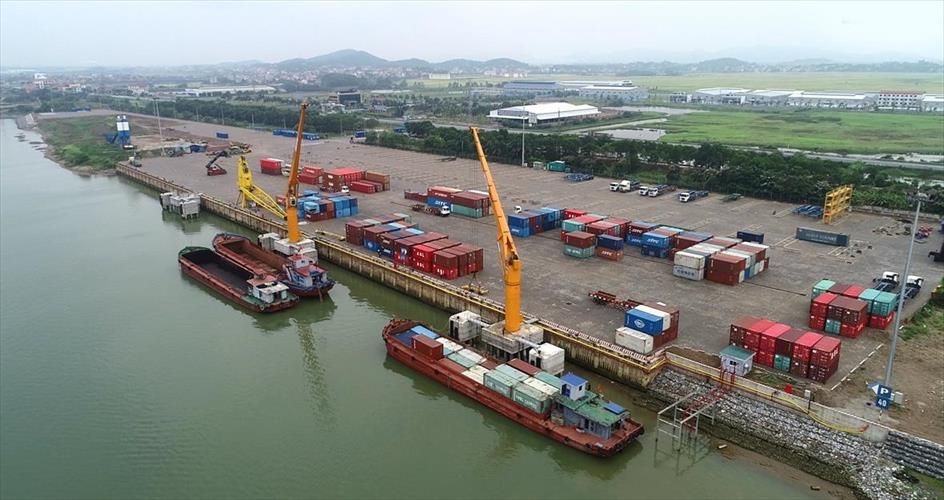 Tan Cang – Que Vo ICD
Tan Cang – Que Vo ICD
ICD TC-QV promises to be the gathering place for the containers (both laden and empty), the customs clearance point for import and export cargoes, serving local enterprises, especially since those in Bac Ninh, Bac Giang, and Thai Nguyen who have the same customs department.
Customer’s value and sustainable development
The operation of ICD TC-QV and other ports like Tri Phuong port, Dabaco port will grow closer with domestic waterway barging service via Cam river, Kinh Thay River, Duong river. With the convenient connection of roads and waterways, this combined service ensures local enterprises with stable, socio-environmentally friendly logistics solutions. Moreover, using barging service, finishing customs clearance procedures, and delivering/receiving cargo at ports close to the factories also helps the company more actively in the production plans thanks to the shorter delivery time and less risk.
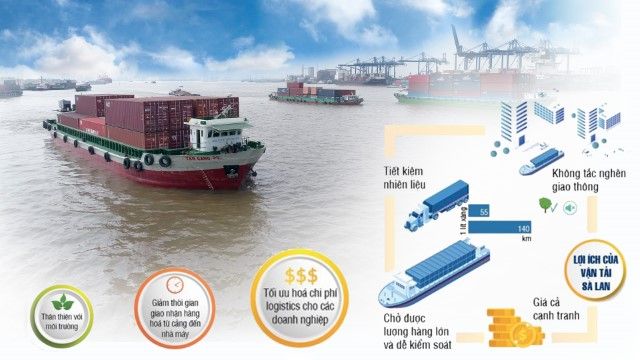
Optimal benefits of waterway transport
Especially with a larger transportation capacity and preferential policies, barging transportation gives customers the best choice for cutting logistics costs. From the calculation of an enterprise, using barging service will help reduce logistics cost by at least 10% compared to those using road transport. This is quite impressive in the context of the pandemic and even more meaningful for those with constant large volumes like Canon, Samsung, Vina Solar, Nitori, Ikea, Foxconn… In addition, there are other good policies such as container handling fees lower than those in the Hai Phong area, free storage fees e.t.c also making the river ports very attractive.
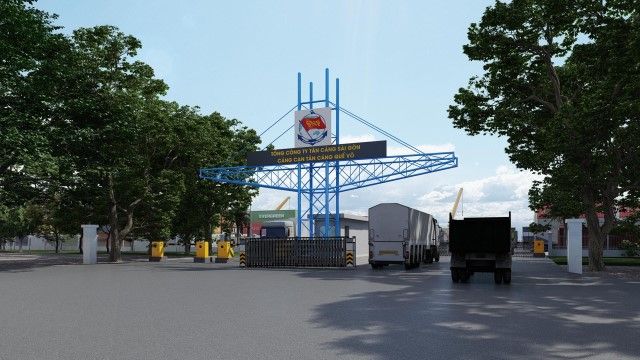
Tan Cang – Que Vo ICD at Bac Ninh province
However, besides the efforts and support from VIWA, TC QV ICD and other river ports can only maximize its support and reduction of the pressure on the road when the other Central and Local Ministries and Authorities also join hands in facilitating the barging activities, promote public relation activities at the central level; remove bottlenecks both in terms of infrastructure and mechanisms and policies, creating regulations for free infrastructure fee in Hai Phong to make a difference between road and waterway transport (given the fact that barging transportation does not use infrastructure invested by the locality). Lastly, there needs to be responsible for the society, the environment, and the sustainable development of local enterprises in switching to waterway transport.
Saigon Newport Corporation will officially operate TC-QV ICD with full functions by September 2021. Currently, basic infrastructure has been completed, SNP is submitting the paper documents to get the permits of Dry port (approval from Vietnam Maritime Administration and Ministry of Transport) as well as the Inland Customs Clearance Place (approval of Customs Department and Ministry of Industry and Trade). The operation of TCQV ICD will be the breakthrough in efforts to find solutions to support the overloaded road transport in Northern Vietnam that the Government, MOT, and VIWA to lead the implementation.
(Trần Cường SNP)